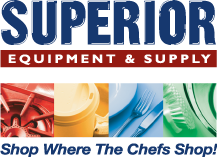Foodservice knives should remain an important supply concern. It’s more important for cooks to have a sharp knife than one that’s shiny. When shopping, there are certain considerations that buyers need to take into account.
Best Types to Purchase
The Restaurant Blogger recommends that kitchens acquire three specific types of knives. First, they recommend chef’s knives. These have heavy handles and blades, which make them sturdy and able to chop plenty of different products including vegetables, meat and herbs. If used correctly, they can handle more than 90% of the cutting necessary for meal preparation
Other knife models that the news source mentioned included serrated and paring knives. Serrated knives are said to be one of the most efficient options on the market, and while they’re most commonly known for cutting bread, they can also easily prepare tomatoes, citrus fruit, pies and quiches. Paring knives are meant for more intricate cuts. Their best uses include peeling and coring fruits like apples and tomatoes. They can also devein shrimp and prepare other seafood, and the small and fine blade allows for soft products to be cut without disfiguring them.
Features to look For: Restaurant Hospitality adds that there are certain features that raise some knives above others. Primarily, steel knives will likely meet industrial standards, which is important. Ensuring that the steel is stain-free and contains high carbon is also a strong indicator of quality. Carbon in the build gives the steel in the knife toughness and strength, helping it maintain its sharpness for a longer time, while the steel type keeps rust out of the equation for a longer period of time.
Wear-resistance is also a key factor, as it protects blades against abrasions when cutting tough material corrosion. Another prominent aspect that should be recommended is proper edge geometry. When an edge is properly made, blades are easier to sharpen and restore. Otherwise, sharpening can take hours of time.
Finally, it’s important to make sure that the handle of the knife meets proper ergonomics. This doesn’t just mean that the knife is easy to use, but can also protect against any slip-related accidents. Handles should also have National Sanitation Foundation logos, which means they will not be affected by bacteria.

